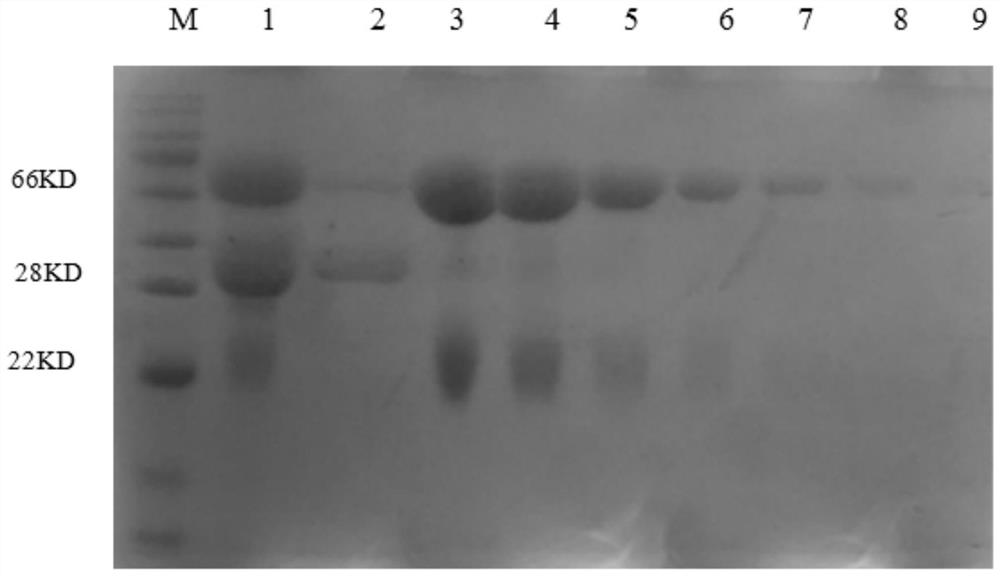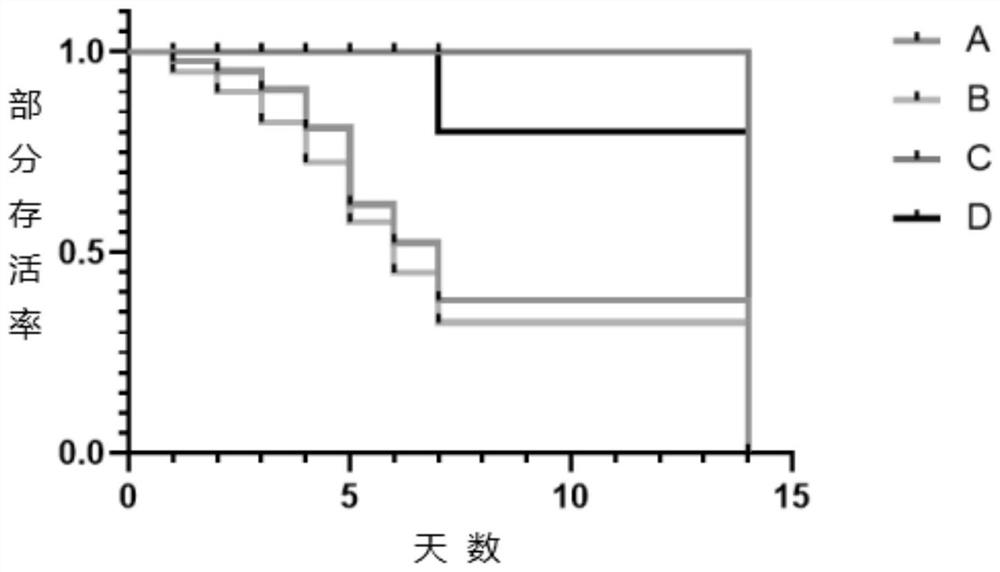Anti-paenibacillus larvae yolk immunoglobulin and preparation method and use thereof
A technology of honeybee larvae and bacillus, which is applied in the preparation methods of peptides, antibodies, antibacterial drugs, etc., and can solve problems such as applications that have not been reported.
- Summary
- Abstract
- Description
- Claims
- Application Information
AI Technical Summary
Problems solved by technology
Method used
Image
Examples
Embodiment 1
[0036] Example 1 Preparation of anti-bee larva bacillus yolk antibody
[0037] 1.1 Cultivate and inactivate Bacillus in bee larvae to prepare antigen
[0038] Inoculate honeybee larvae Bacillus on nutrient agar medium, culture upside down at 37°C for 12 hours, pick a single colony and inoculate it in nutrient broth medium, shake the shaker at 37°C and 180rpm for 8 hours, adjust the nutrient broth The amount of bee larva bacillus in the culture medium is 2×10 8 CFU / ml, after centrifuging to remove the supernatant, mix it with normal saline to obtain the amount of Bacillus in bee larvae, which is 2×10 8 CFU / ml bacterial suspension, centrifuged, replaced with normal saline with the same volume of 0.4% formaldehyde, and then inactivated at 4°C for 48 hours to obtain the inactivated Bacillus antigen of honeybee larvae.
[0039] 1.2 Immune laying hens and collect eggs
[0040] The laying hens were immunized for the first time and 2 to 3 times for booster immunization.
[0041] T...
Embodiment 2
[0057] Example 2 Identification of anti-bee larval Bacillus yolk antibody
[0058] 2.1 Concentration determination and purity determination
[0059] After the egg yolk antibody freeze-dried powder was dissolved in PBS, the concentration was measured with a BSA kit. The measured protein concentration was 13.426mg / ml, and the total protein amount was about 180mg, which was within the normal range. Take 15 μl of the protein solution and mix it with an equal amount of 2×loading Buffer, then bathe in boiling water for 10 minutes, and perform 12% reducing SDS-PAGE electrophoresis.
[0060] The result is as figure 1 As shown, the heavy chain and light chain are located at 66KD and 28KD respectively, and the total molecular weight is about 180KD.
[0061] 2.2 Indirect enzyme-linked immunosorbent assay (ELISA) detection titer
[0062] Take 2×10 8 CFU / ml inactivated Bacillus larvae of honey bee larvae antigen-coated ELISA plate, 100 μL per well, coated overnight at 4°C, washed 5 tim...
Embodiment 3
[0067] Embodiment 3 in vitro antibacterial experiment
[0068] Inactivate the bee larvae Bacillus and dilute to 1×10 3 CFU / ml, take 150 μL anti-bee larvae yolk antibody and common yolk antibody solution respectively, add the same amount of bacterial solution and mix them, and then combine at 37°C for 20 minutes, take 100 μL to coat the nutrient agar plate, set 2 replicates for each, and invert at 37°C After 24 hours of cultivation, the cells were photographed and counted.
[0069] Antibacterial experiments showed that the group added with yolk antibody could significantly inhibit the growth of bacillus in bee larvae, and the amount of bacteria was 1 / 5-2 / 5 of that of the group with ordinary yolk antibody.
PUM
 Login to View More
Login to View More Abstract
Description
Claims
Application Information
 Login to View More
Login to View More - R&D
- Intellectual Property
- Life Sciences
- Materials
- Tech Scout
- Unparalleled Data Quality
- Higher Quality Content
- 60% Fewer Hallucinations
Browse by: Latest US Patents, China's latest patents, Technical Efficacy Thesaurus, Application Domain, Technology Topic, Popular Technical Reports.
© 2025 PatSnap. All rights reserved.Legal|Privacy policy|Modern Slavery Act Transparency Statement|Sitemap|About US| Contact US: help@patsnap.com



